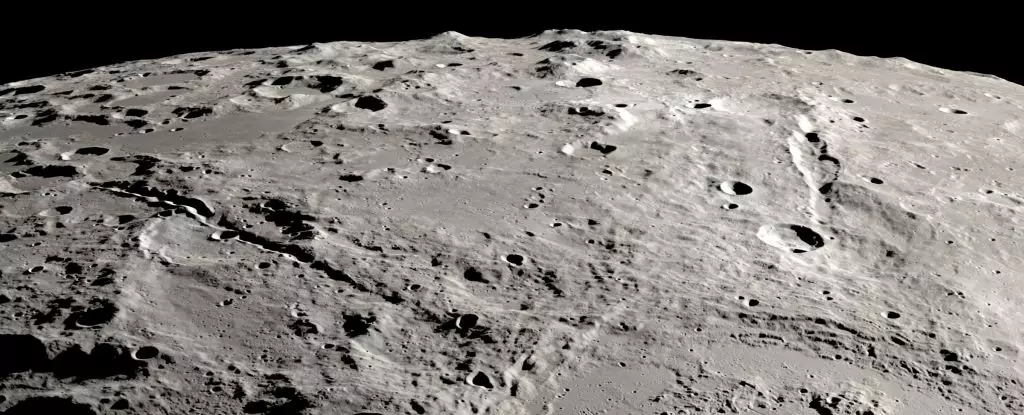The Grand Canyon, one of Earth’s most breathtaking natural wonders, owes its stunning formation to millions of years of erosion carved out by the relentless flow of the Colorado River. However, Earth’s grandeur is not unique; other celestial bodies in our Solar System possess their own geological marvels. Among them, the Moon showcases impressive canyons which, in stark contrast to the Grand Canyon’s protracted formation, have emerged from swift, cataclysmic events. Recent scientific inquiries have unveiled fascinating insights into the origins of two such lunar canyons, Vallis Schrödinger and Vallis Planck, suggesting a much more violent yet rapid process of formation than previously understood.
Located on the Moon’s far side, near the south pole, the Vallis Schrödinger and Vallis Planck canyons present remarkable features that piqued the interest of planetary scientists. These structures measure an astonishing 270 and 280 kilometers in length, with depths reaching up to 3.5 kilometers. Unlike the Grand Canyon, which stretches over 446 kilometers but only delves 1.86 kilometers deep, these lunar canyons exemplify a different geological narrative. The research led by David Kring and his team from the US Lunar and Planetary Institute offers a transformative understanding of how these canyons came to be, proposing that their formation was a result of a gigantic impact event rather than gradual erosion.
The significant discovery lies in the nature of the impact that resulted in these canyons. Unlike the long-term destructive processes of weathering and erosion seen on Earth, the geological structures on the Moon originated rapidly, potentially within a mere ten minutes. This revelation compels us to rethink our approach to understanding extraterrestrial landscapes, suggesting that explosive impacts may play a crucial role in shaping the topography of bodies lacking liquid water.
To decode the creation of Vallis Schrödinger and Vallis Planck, Kring’s team meticulously analyzed high-resolution imagery of the Moon’s surface, mapping the distribution and direction of impact ejecta from the Schrödinger crater. Their findings revealed an asymmetrical pattern of ejecta, with most debris directed away from the lunar south pole. The speed at which the material was ejected was striking, ranging from 0.95 to 1.28 kilometers per second. This rapid ejection of large material masses signifies that the energy unleashed during the impact vastly exceeded the total energy contained in all global nuclear arsenals combined—approximately 130 times greater.
Such powerful impacts have shaped not just lunar features but also provide context for understanding Earth’s own geological history. By establishing connections between these events on the Moon and their effects on Earth, we can appreciate the dynamics of impact events across the Solar System.
As humanity gears up for the upcoming Artemis III lunar mission, set to launch in 2027, the implications of these findings become increasingly vital for future exploration endeavors. Though the exact landing site remains undetermined, the knowledge of where the impact ejecta is concentrated opens new avenues for exploring the Moon’s geologic past. Contrary to fears about present-day impact risks, the last significant event in the Schrödinger region occurred roughly 3.8 billion years ago, long before modern human activity.
The models suggest that the distribution of ejecta from the previous impacts will potentially guide astronauts toward more pristine lunar materials, enhancing their chances to analyze older, more informative minerals. This alignment of scientific inquiry and exploratory missions underscores a broader commitment to unraveling the mysteries of our celestial neighbor.
The exploration of Vallis Schrödinger and Vallis Planck serves as a reminder that the universe is replete with stories waiting to be told. As we usher in a new era of lunar exploration, the insights garnered from these canyons will illuminate not only the Moon’s past but may also reshape our understanding of planetary science as a whole. This intersection of past geological events and future missions embodies the spirit of inquiry and discovery, affirming that the quest for knowledge, whether terrestrial or extraterrestrial, is inexhaustible.


Leave a Reply